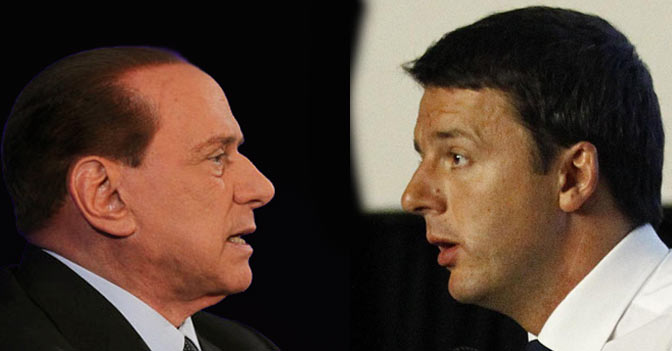In its essence, the Renzi-Berlusconi pact is an attempt to create a direct link between Italy’s two largest mainstream parties, i.e. Matteo Renzi’s PD and Silvio Berlusconi’s Forza Italia. Renzi and Berlusconi did not simply agree on a hastily approved new electoral system that concentrates power in the hands of party leaders and minimizes political fragmentation. They also publicly stated their intention to bring about lengthy constitutional reforms such as the Senate overhaul and the reform of section V of the Constitution.
While most comments focus on the electoral reform, at Policy Sonar we believe that the Renzi-Berlusconi entente cordiale is even more important. In fact, any electoral system regulates how a country goes to polls and can amplify or contain a victory. History, however, provides converging evidence FG Prot. No. 2/2014 that in Italian politics it is not just the numbers that matter: also governments with large majorities can find it incredibly hard to push through reforms.
Berlusconi, for instance, won the 2008 elections with a majority of 518 MPs (both senators and deputies), and the 2001 elections with a 544 MPs lead.
Moreover, between 1979 and 1992, the s.c. “Pentapartito” coalition won four times with very strong majorities (556, 548, 554 and 531 MPs). Thus, even a mega-majority is no assurance of stable governments capable of delivering reforms. This has mainly to do with Italy’s complex institutional architecture, designed after World War II with the deliberate aim to avoid power concentrations and quick decisions.
Berlusconi and Renzi decided to embark on a lengthy and definitely not riskless constitutional reform in order to reduce the legislative procedures (via Senate reform) and to recentralize powers for energy, transports and infrastructures (via Section V reform). By doing so, they showed that they believe in reforms – as opposed to the M5S and the Italian “indignados” bloc that wants to bring down the system rather than reform it – and that the only way to bring about “architectural” reforms is through mutual appeasement.
Appeasement could only be achieved by Renzi and Berlusconi, who are neither government members nor MPs, and therefore can be seen as not “compromised” with Enrico Letta’s troubled cabinet.
Renzi and Berlusconi also signalled their intention to focus on two specific reforms rather than on a wider basket of reforms. This “cherry picking” comes as no surprise to Policy Sonar. In fact, several months ago (see our note no. 30/2013) we pointed out that Enrico Letta’s constitutional reforms agenda included very different items, and that any failure to conclude the process would also “kill” constitutional reforms for which unanimous
agreement is already there. Indeed, back in 2013 several observers were already advocating a separate, fast-lane reform of section V of the Constitution rather than its inclusion in the wider perimeter of constitutional reforms, where unanimous consent is far from granted. Renzi and Berlusconi’s choice of a small reforms basket is a fine tactical move, and it also conveys the idea that someone in the Italian political landscape has the vision to really simplify things in the regulatory framework. If this message gets through, several investors may develop an actual appetite for Italian energy or infrastructural assets, and others might accelerate their investment decisions. This could be the case of the reportedly imminent sale of a 49% stake in CDP Reti, a sub-holding of the Cassa Depositi e Prestiti group that owns a 30% stake in Snam (gas distribution), and might end up owning a 29,9% stake in Terna (electricity distribution).








